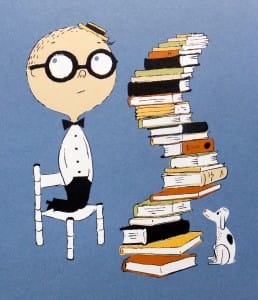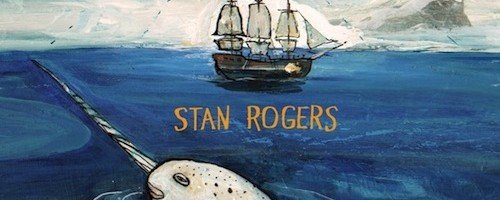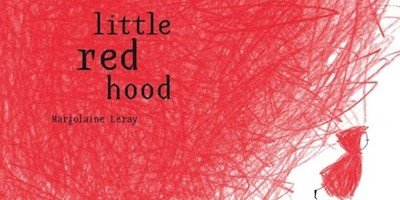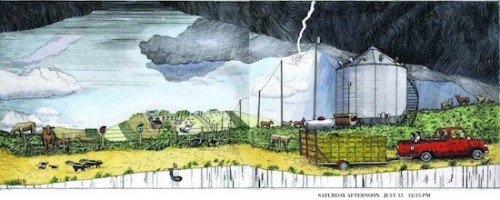*Reading is the dream through foreign hands* Fernando Pessoa
 Im Land Der Bücher. In the Land of Books. As the title suggests, Im Land Der Bücher is a book about books; about the sometimes strange relationship we have with words, and the myriad states of being one assumes while lost in the pages of a good book. The illustrations in Im Land Der Bücher are not just extraordinarily evocative, they are also beautiful, and funny, and a little bit mournful; words that could describe virtually all paintings by Quint Buchholz, the German artist whose past subject matter includes elephants lumbering down the snowy streets of Canada, a quintet of musicians teetering on a rock, and a man playing a cello on a deserted field while a giant snail, his only audience, oozes by in the distance. In his newest book, Buchholz paints a woman in a bathtub, floating on the ocean. She is reading, and does not notice the beluga whale passing underneath. Where has this book taken her? Though not yet published in English (the author kindly provided a translation), Im Land Der Bücher is a fantastical journey worth taking in any language.
Im Land Der Bücher. In the Land of Books. As the title suggests, Im Land Der Bücher is a book about books; about the sometimes strange relationship we have with words, and the myriad states of being one assumes while lost in the pages of a good book. The illustrations in Im Land Der Bücher are not just extraordinarily evocative, they are also beautiful, and funny, and a little bit mournful; words that could describe virtually all paintings by Quint Buchholz, the German artist whose past subject matter includes elephants lumbering down the snowy streets of Canada, a quintet of musicians teetering on a rock, and a man playing a cello on a deserted field while a giant snail, his only audience, oozes by in the distance. In his newest book, Buchholz paints a woman in a bathtub, floating on the ocean. She is reading, and does not notice the beluga whale passing underneath. Where has this book taken her? Though not yet published in English (the author kindly provided a translation), Im Land Der Bücher is a fantastical journey worth taking in any language.


